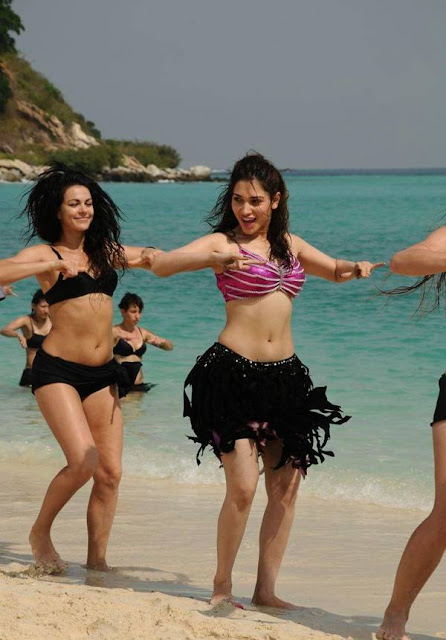Recent archaeological research revealed the existence of several fresh-water lakes, known as palaeolakes, in ancient Fezzan, Libya. Some of these lakes were located in the southern regions of Wadi Irawan, Wadi al-Ajal and the Ubari Sand Sea. The archaeological finds from the area include dark layers of organic matters, shells, hand axes and other Palaeolithic and Neolithic implements and tools which strongly suggested ancient human activity in Fezzan. These lakes were part of a larger network of lakes which have included the legendary nearby Lake Tritonis and Lake Chad among numerous other smaller lakes.
Precise dating of the lakes is yet to be confirmed, but current studies, conducted by the Fezzan Project, suggest Pleistocene and Holocene human presence. However, results from Wadi al-Ajal's playas (: which are mud flats with rough surface, cracks and salt encrustation, like the Playa of Germa which represent the lakes just before drying out) indicate these lakes to have disappeared around 3000 years ago.
Findings from the lakes also suggest that the impressive sand dunes of the Ubari Sand Sea are at least 100,000 years old. Numerous lakes were thought to have covered the eastern and southern regions of the sea, some of which still exist today, as in the case of Gaberoun (or Gabroun), Umm al-Maa and Maafu, where the land surface intercepts the water table.
The main river systems that fed the giant lake: Tasilli N’Ajjer and Hamada Mangueni. The locations of the current Ubari lakes are situated near the middle of the above lake; probably left over as the mother-lake slowly evaporated away into thin air. 09 more images after the break...
The current Ubari Lakes are a group of about 20 lakes, set amidst the landscape of towering dunes and palm fringed oases of the Ubari Sand Sea. To reach these lakes, tourists usually drive to Sabha, then from Sabha to Tkerkiba, where an excellent camping site is used as the base to explore the lakes as well as Wadi Matkhandouch. The depth of the lakes, according to one Libyan diving centre, varies from seven meters deep (as in Gabroun) to 32 meters deep (Ain al-Dibbanah, near Ghadames). Some of these lakes are slowly drying out, owing to drought and artificial drainage of underground resources!
Among the most picturesque of the lakes are Gaberoun and Umm al-Maa (the Mother of Water). Also there are two more beautiful lakes which are rarely visited by tourists. These are: Umm al-H'isan (the Mother of the Horse), also spelt as Oum El Hassan, located north of Gaberoun; and at-Tarhouna, about 11km from Umm al-H'isan.

Lake Gaberoun is one of the largest and most beautiful lakes of the great sand sea of Ubari; beautifully set amidst the magnificent sand dunes, with palm trees on one side and the ruins of the old village on the other. Most of the lakes of the Libyan interior are highly carbonated, enabling swimmers to easily float without exerting any effort. The content of salt is rather high: nearly five times saltier than seawater. Some of the lakes are home for a harmless tiny red shrimp-like creatures that thrive in the shallow waters of the lake, which the Tuareg grind into a paste and use for making cakes, and which have earned the local inhabitants the name of 'worm eaters' (Dawada or Dawwada), and hence the name: Dawada Lakes.
Distances between the lakes:
Tkerkiba - Hofret H'lima — 10 km
Hofret H'lima - Mahrouga — 10km
Mahrouga - Gaberoun — 15 km
Gaberoun - Mafo — 15 km
Mafo - Umm Almaa — about 18 km
Gaberoun - Umm Alh'isan — 30 km
Umm Alh'isan - Attrouna — 11 km
Tkirkiba - Mandara — 15 km
Tkirkiba - Umm Almaa — 17 km
Tkirkiba - Mafo — 39km
Tkirkiba - Gaberoun — 45 km
The name Gaberoun is a compound of two names: Gaber (grave) and A'awn (a name). The oasis was the home of an old settlement which has been moved elsewhere. The ruins of their settlement are located on the western shore of the lake (see photo). The temperature of the water is, strangely enough, colder on the surface than it is a foot or two below, where it is noticeably warmer. A tourist camp is located on the northeastern shore of the lake, with a Tuareg shop, selling traditional Berber jewellery and other local crafts.
Libya’s Landlocked Lakes: Wet Spots In A Sea Of Sand. Text






























































